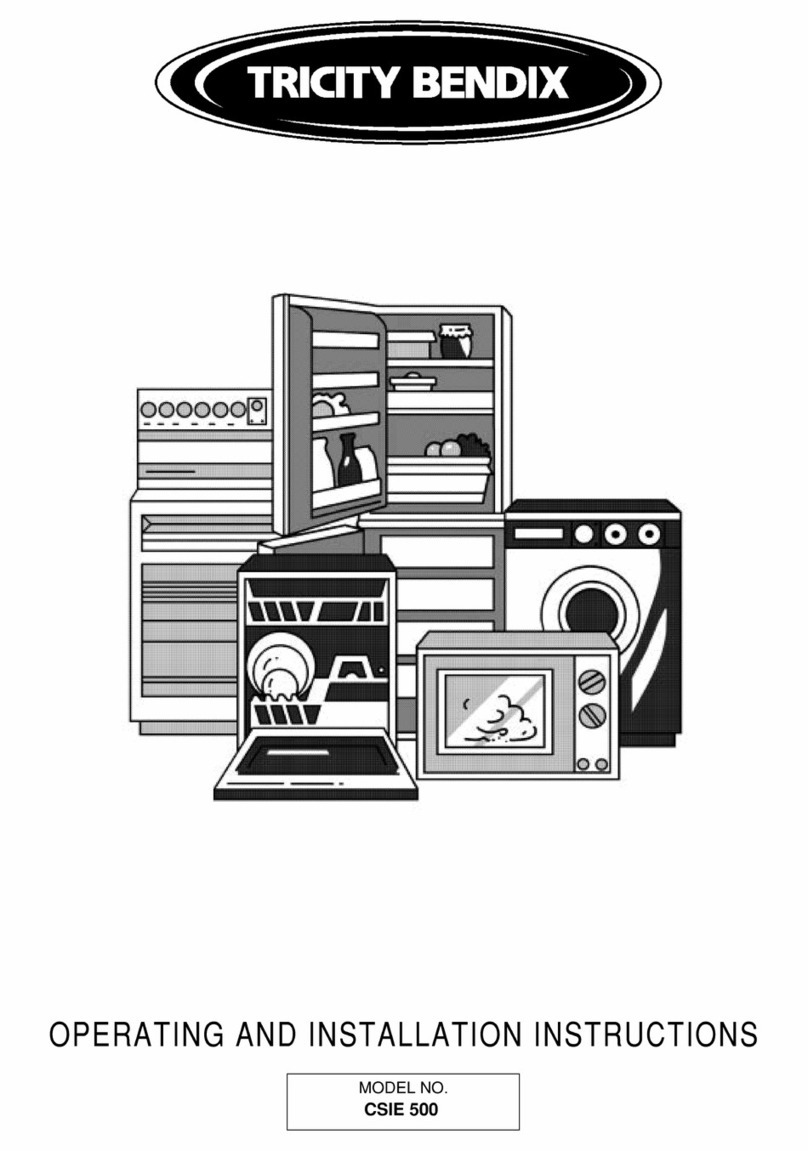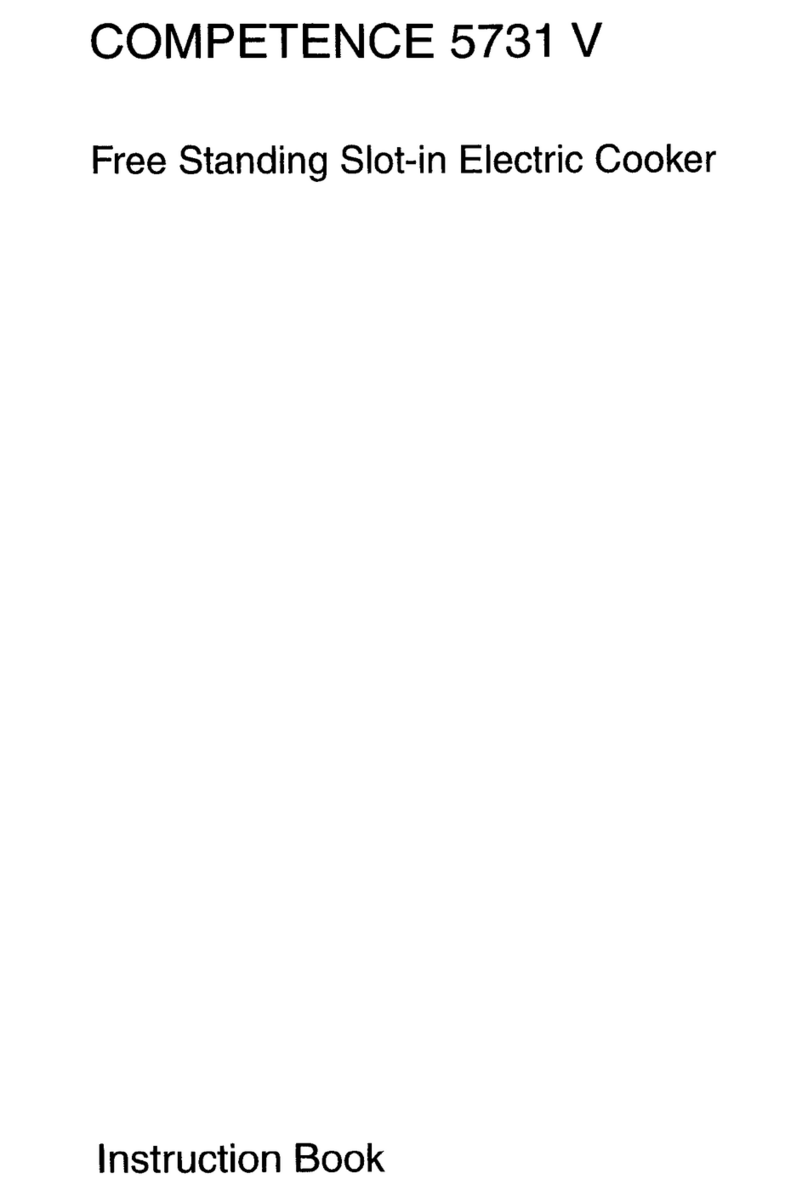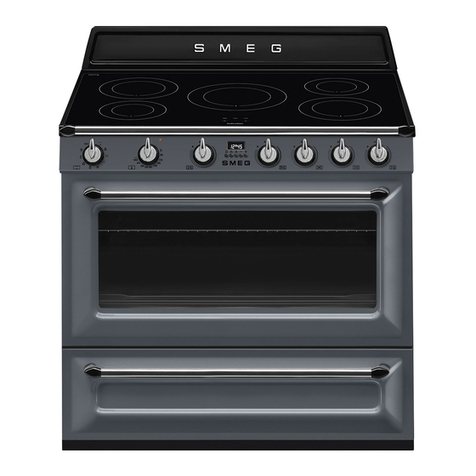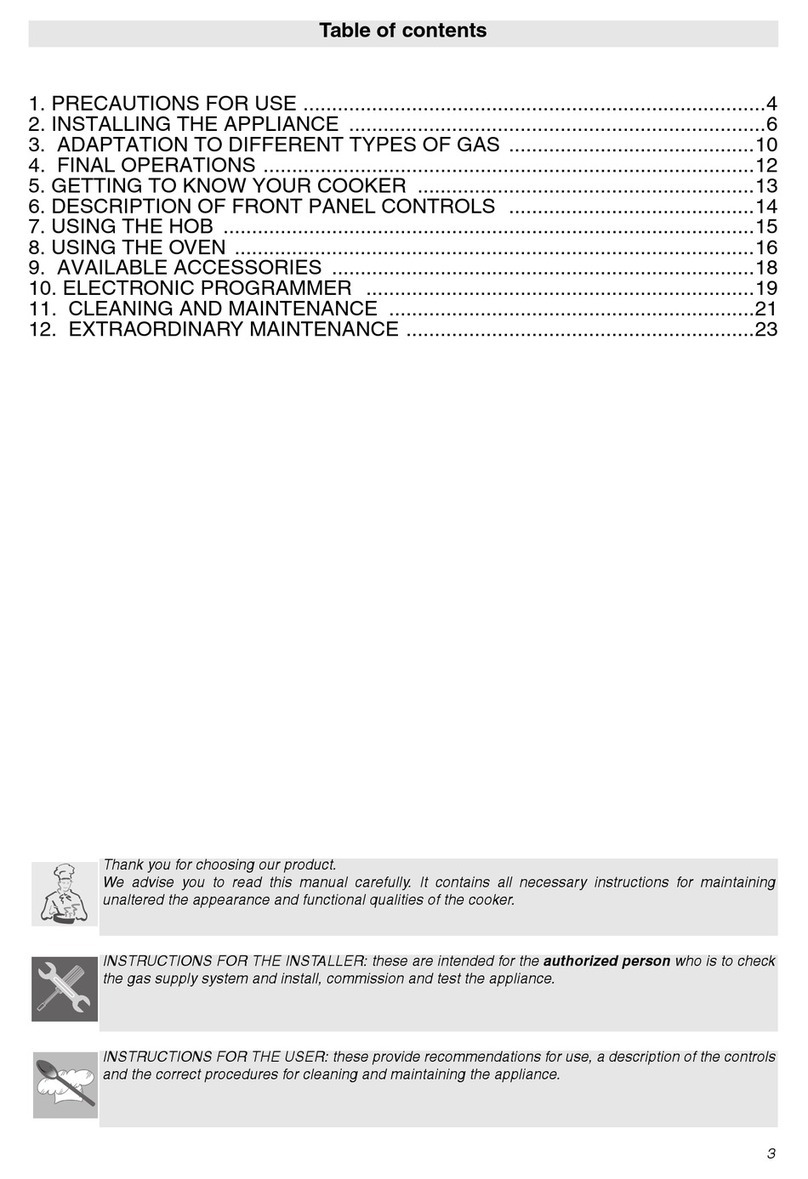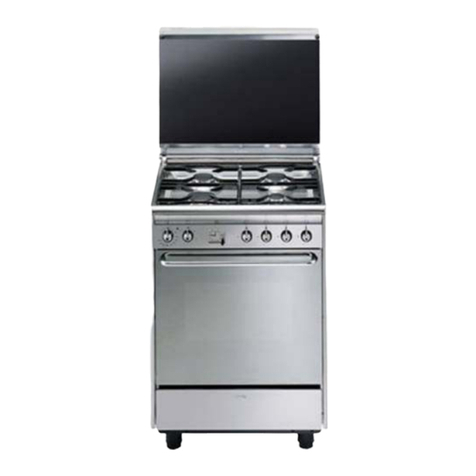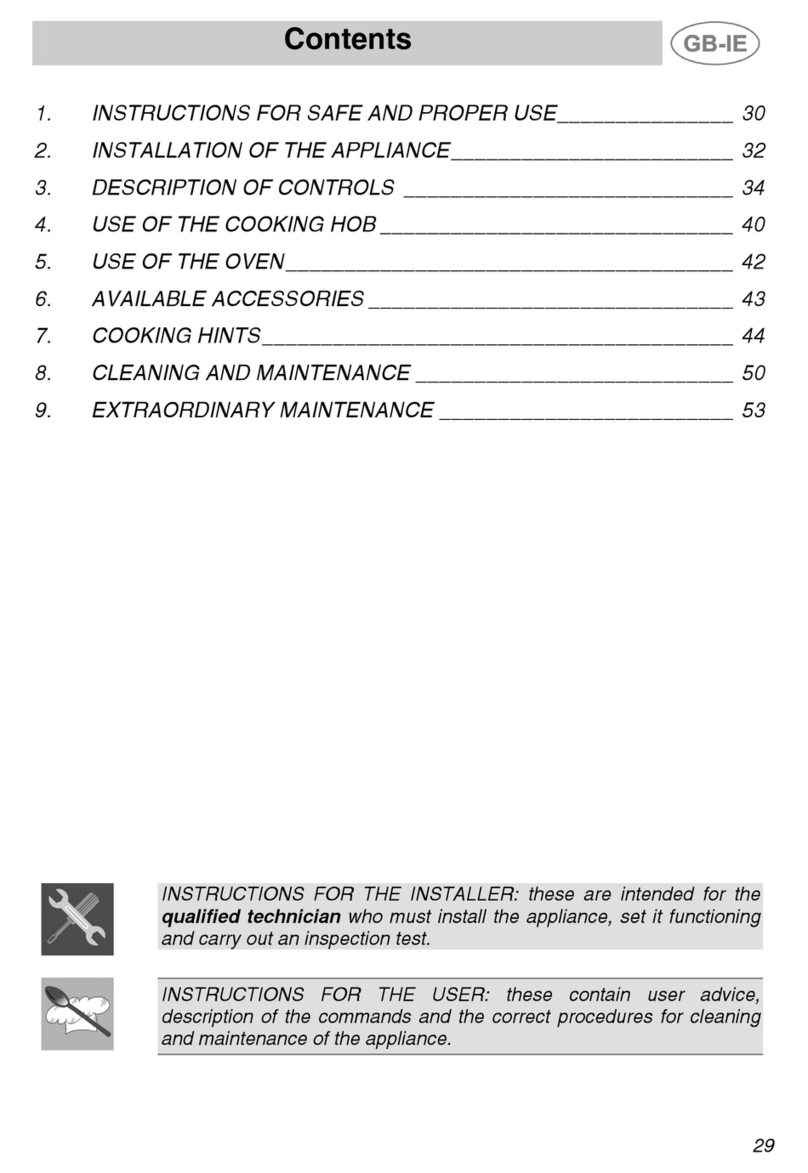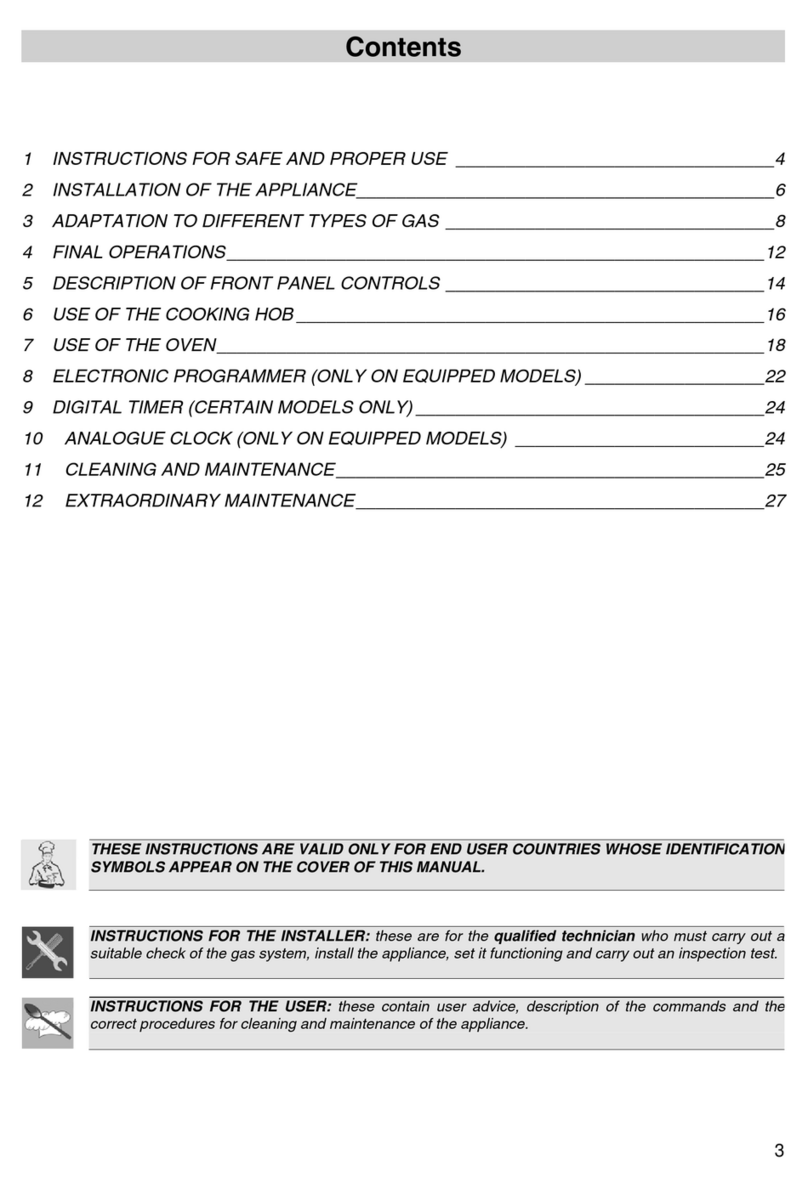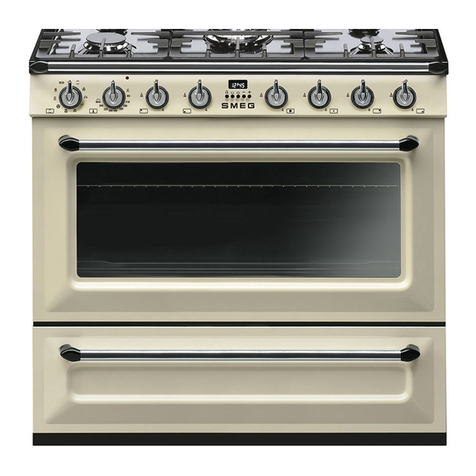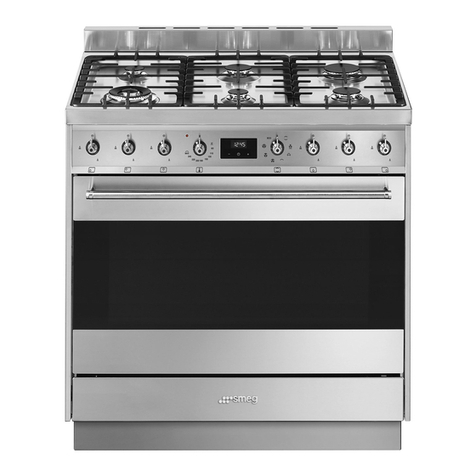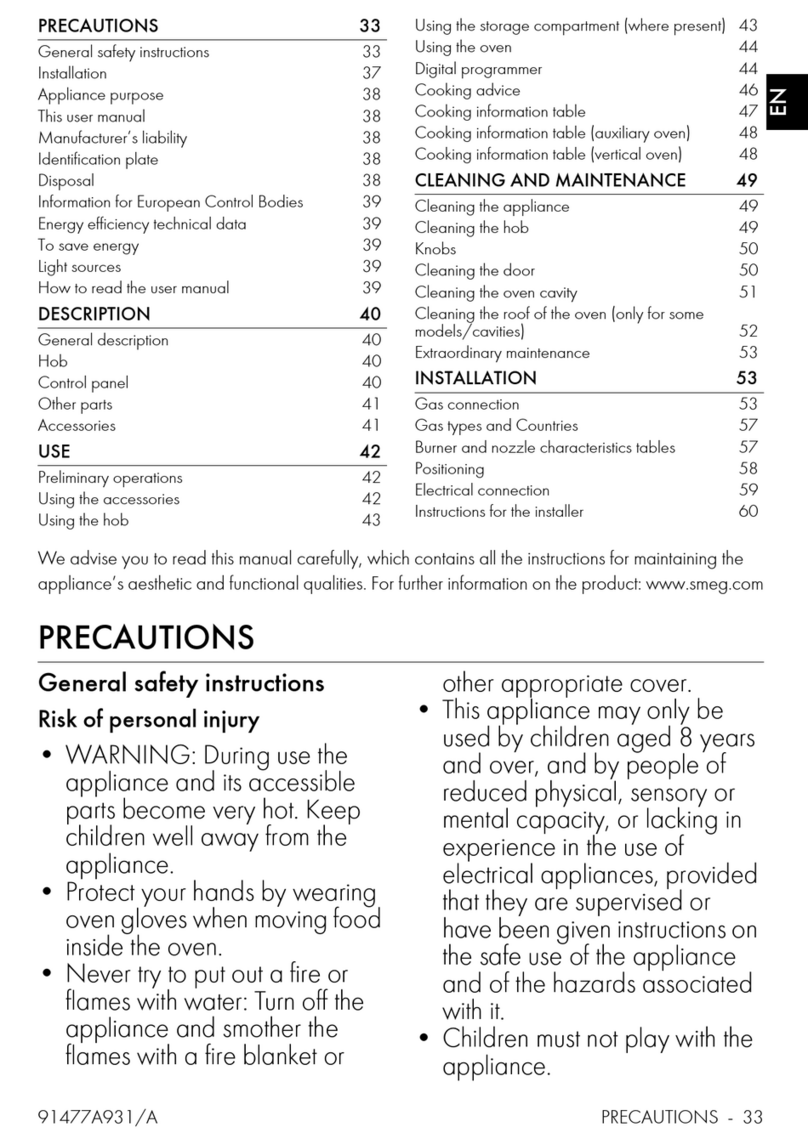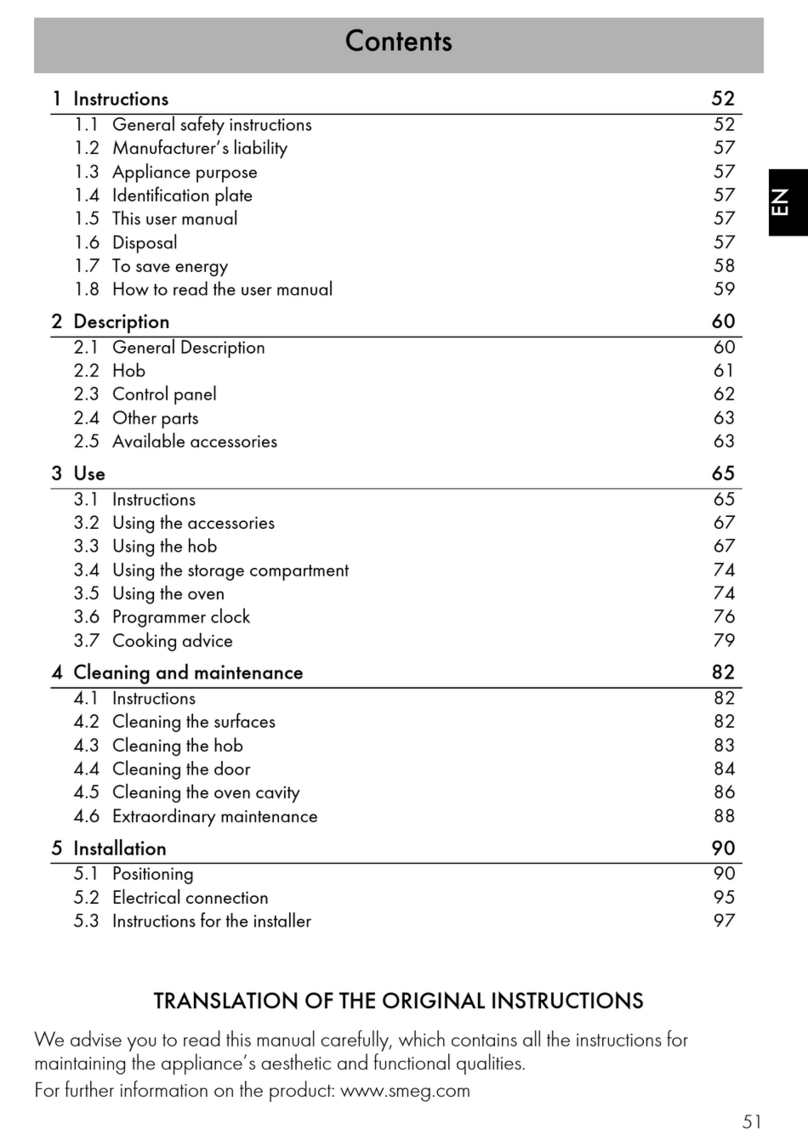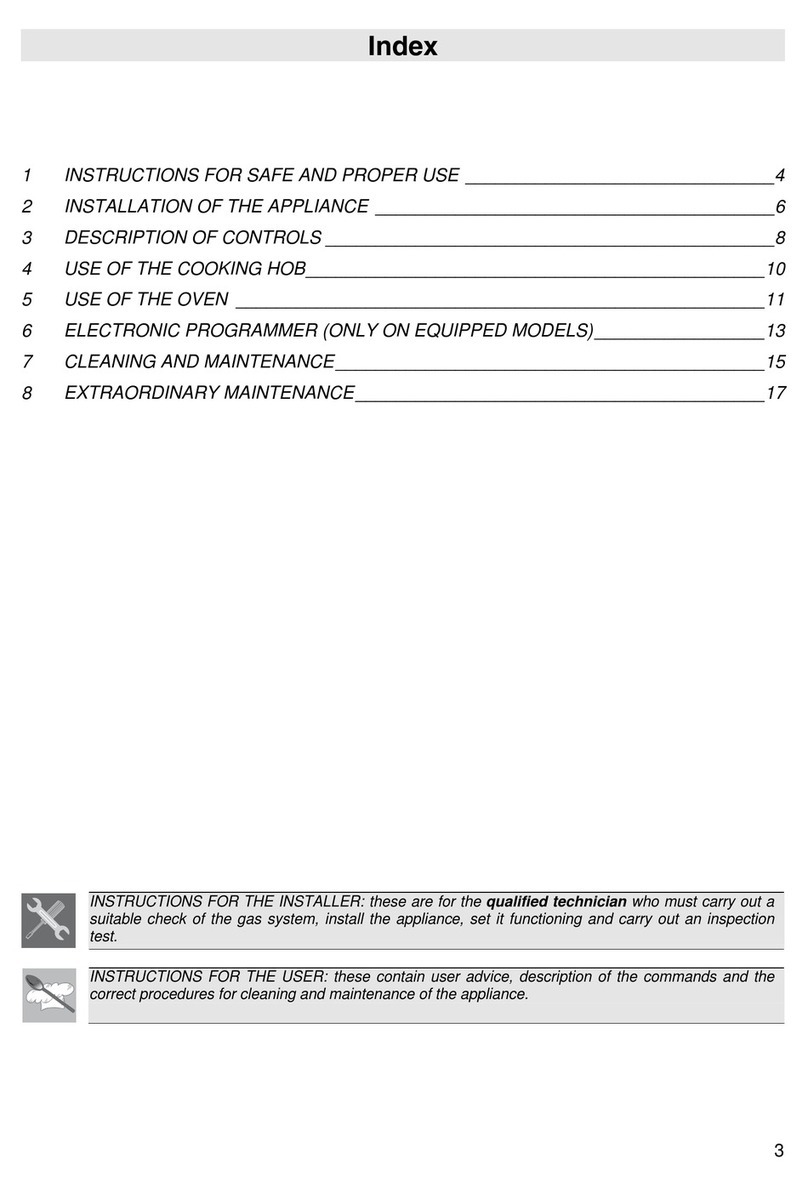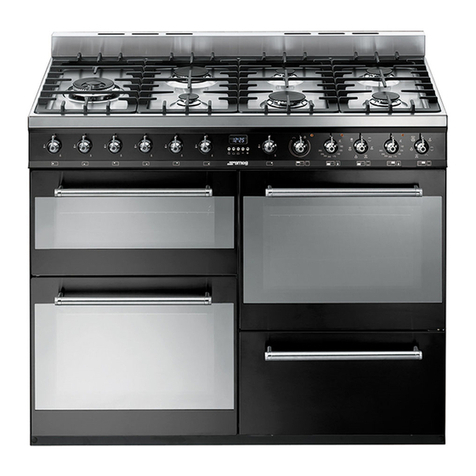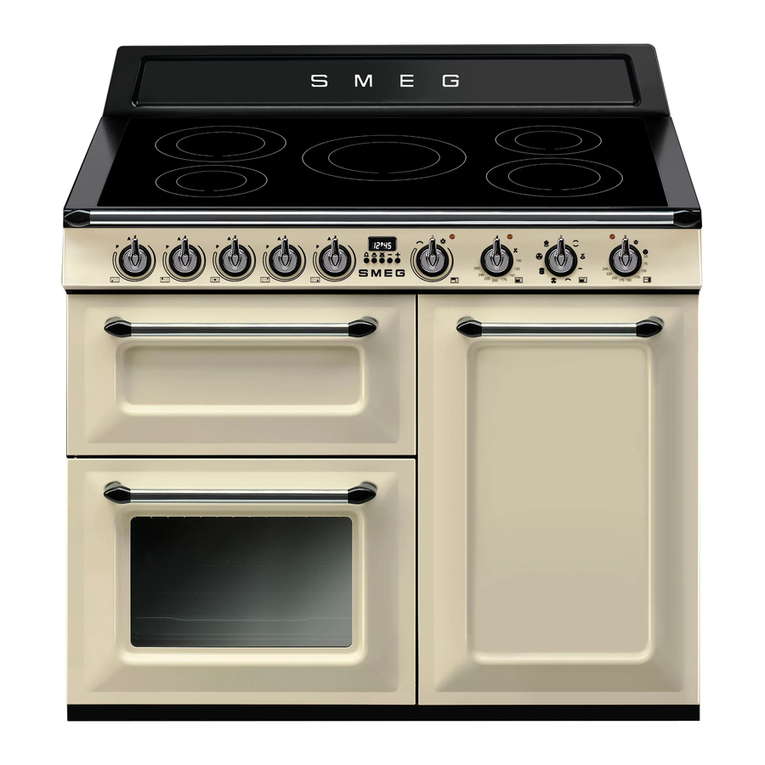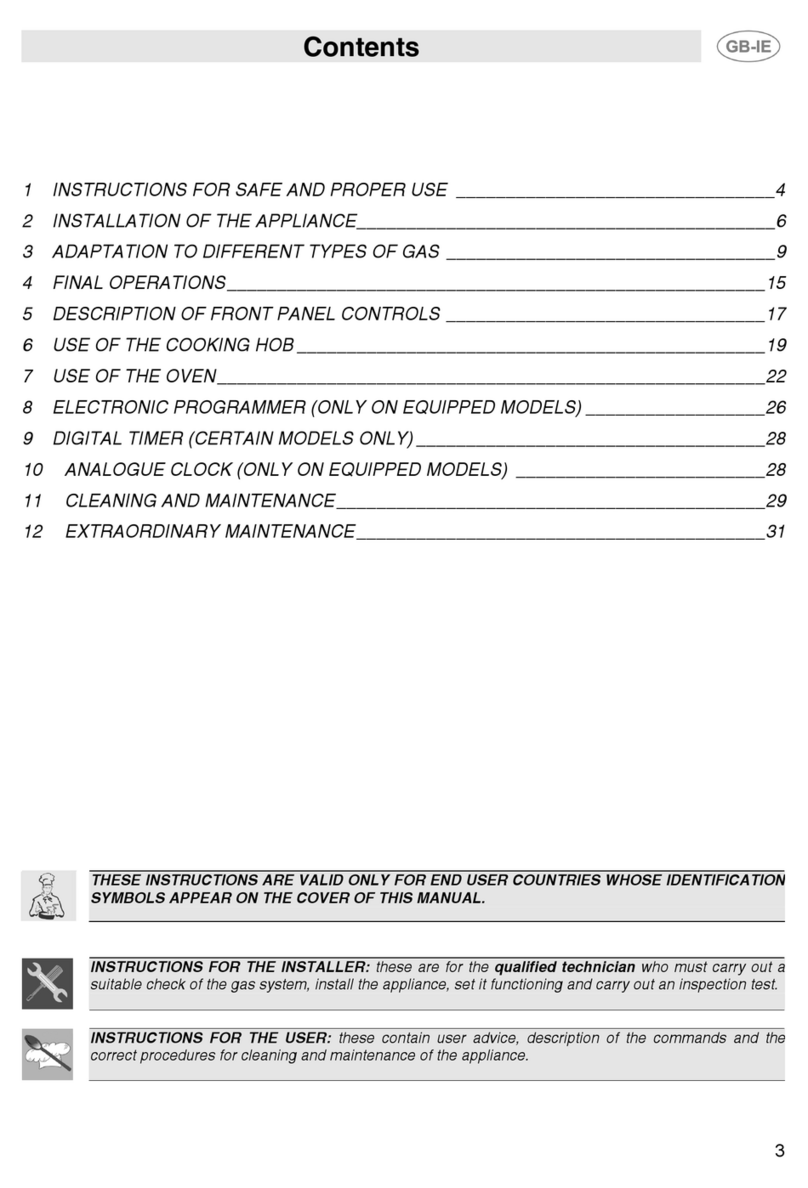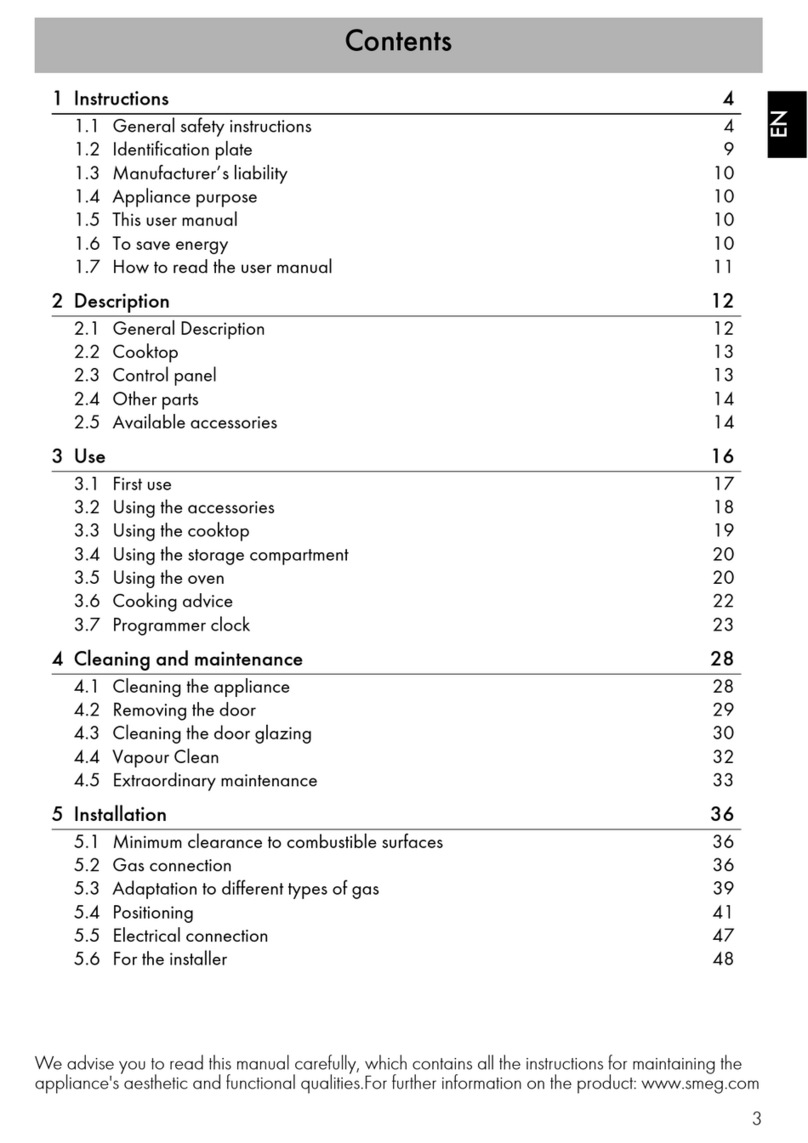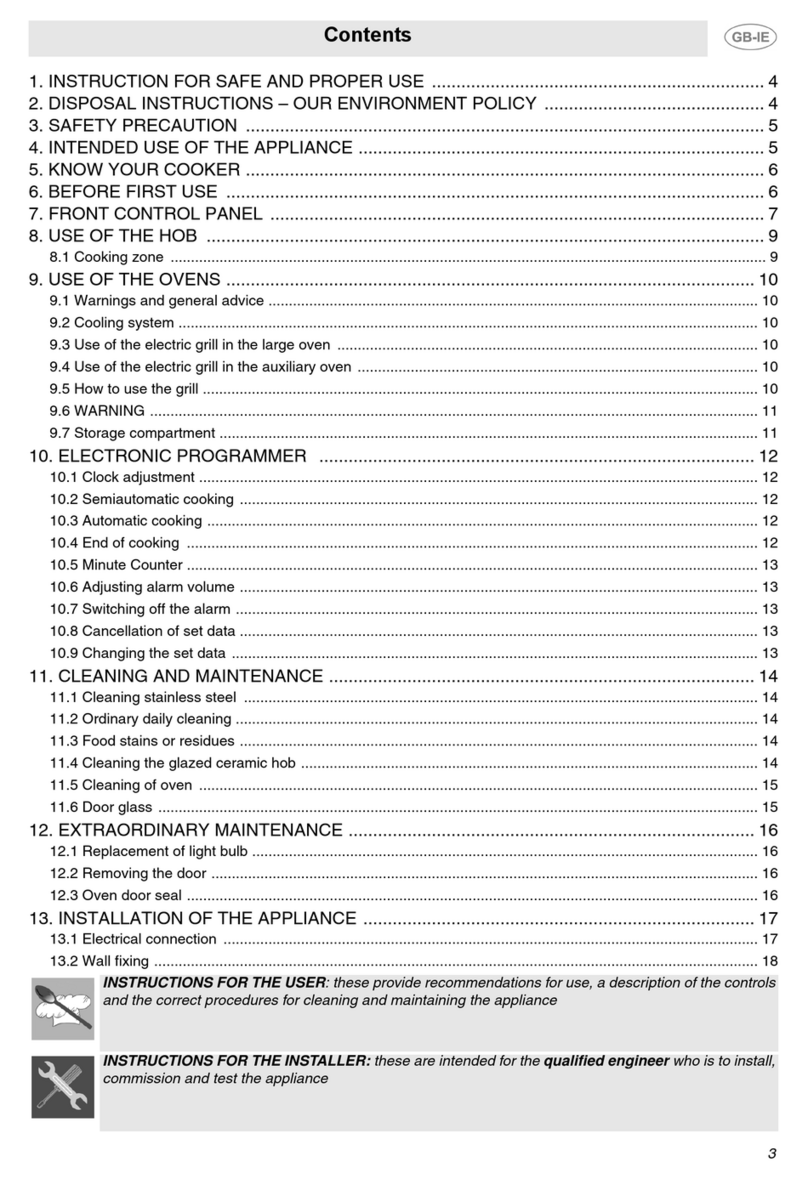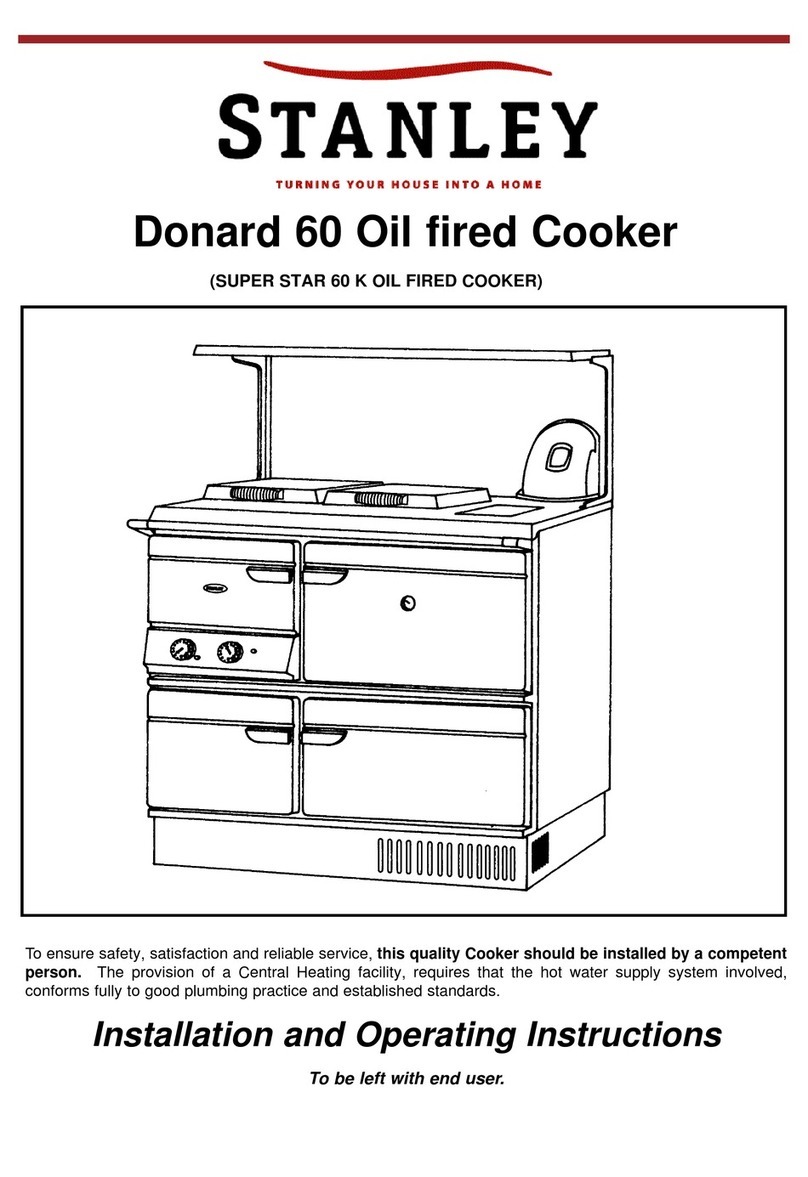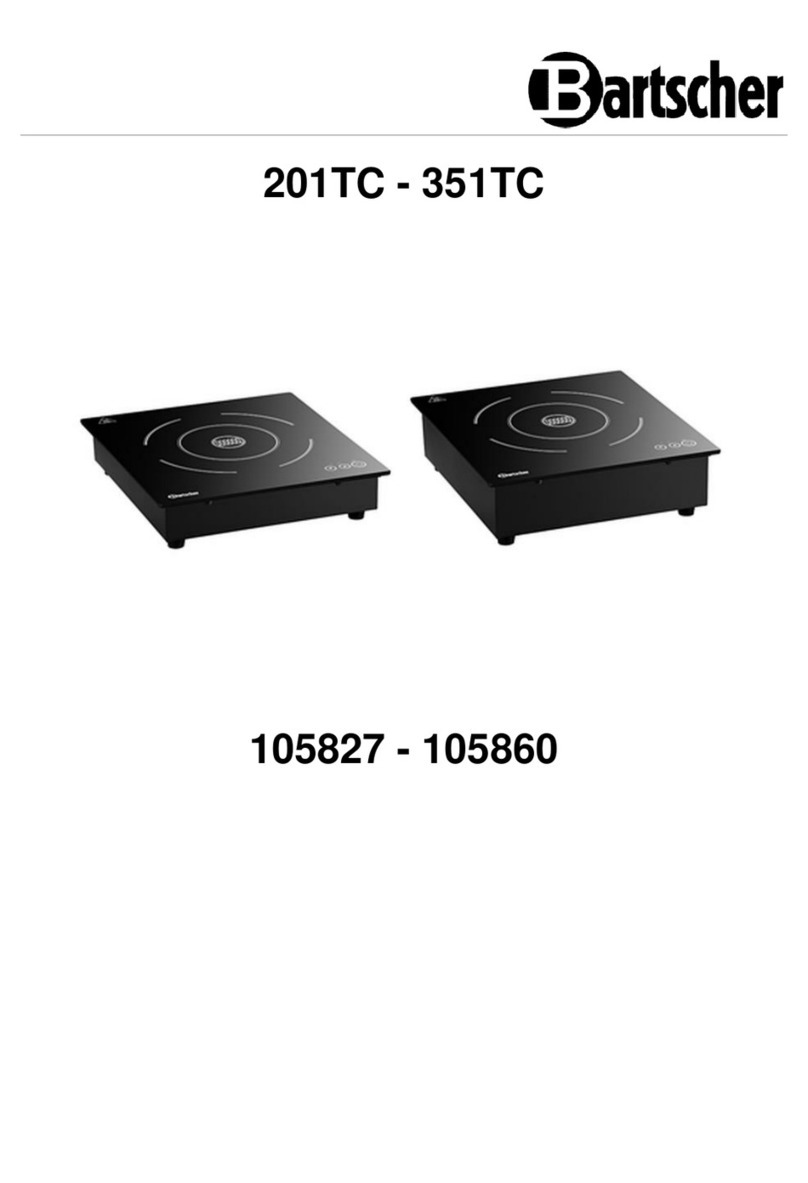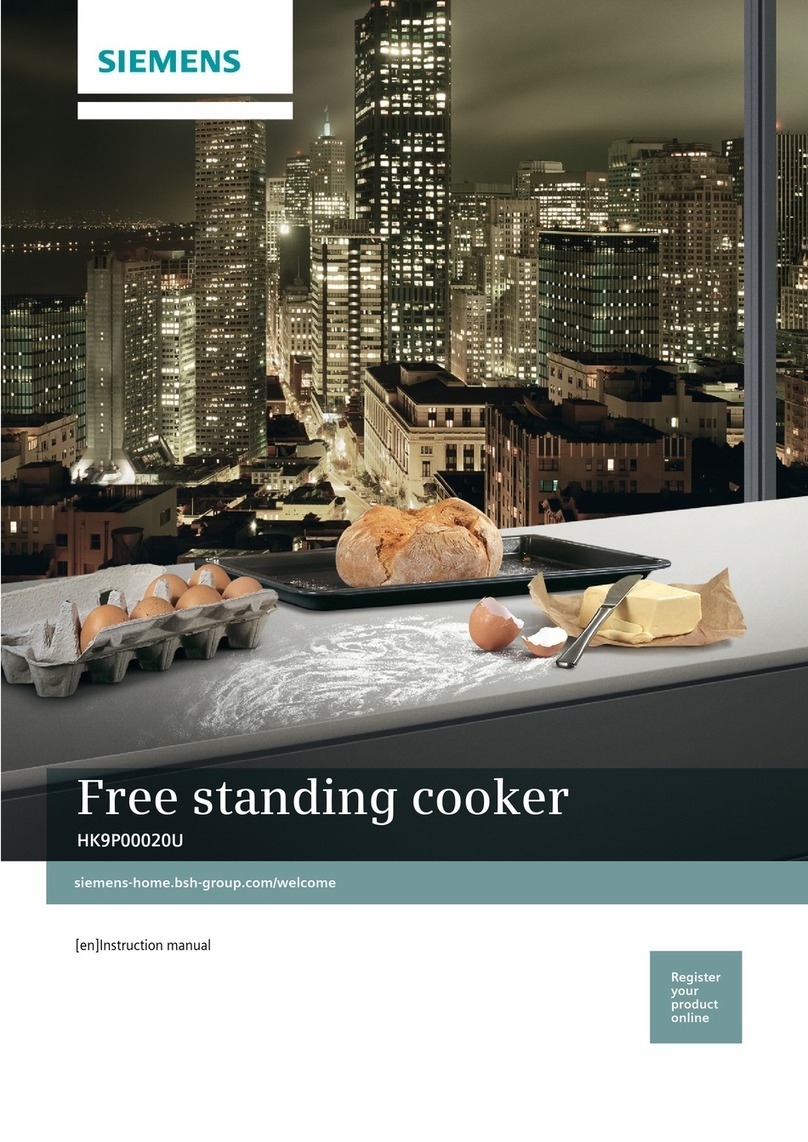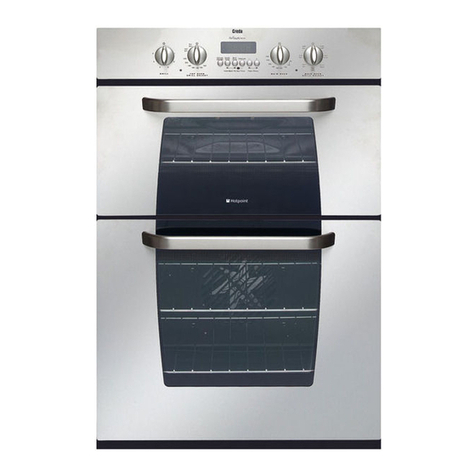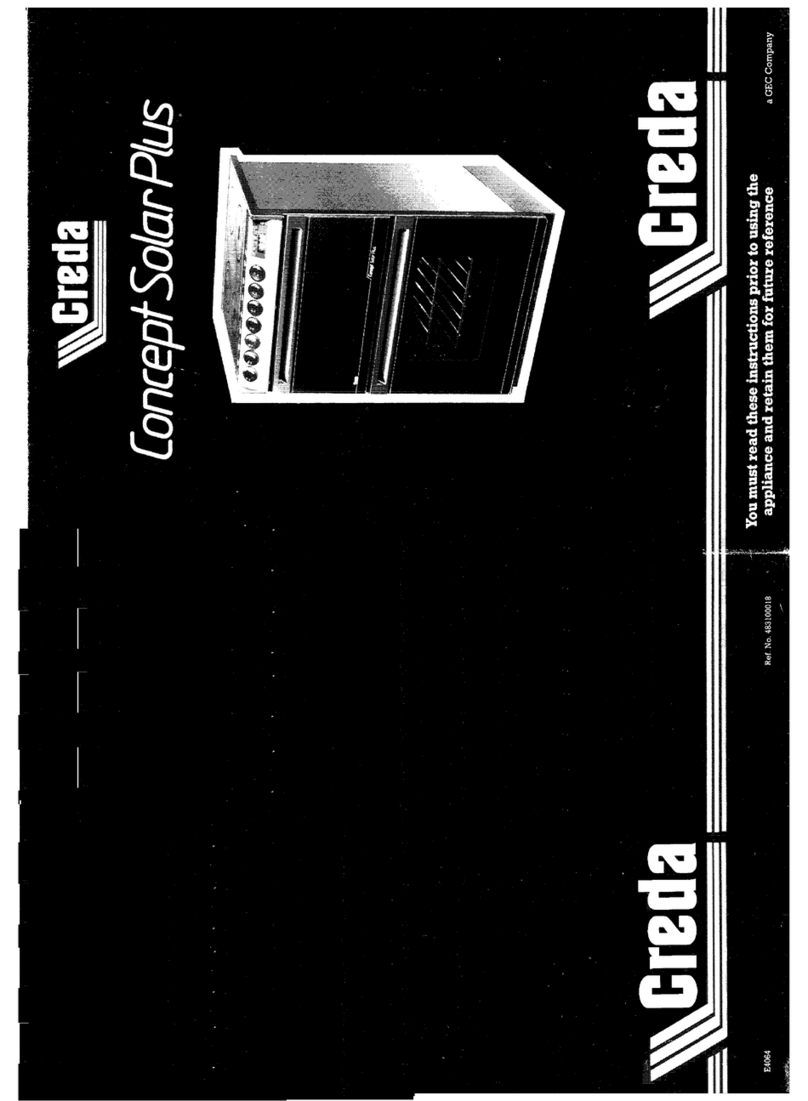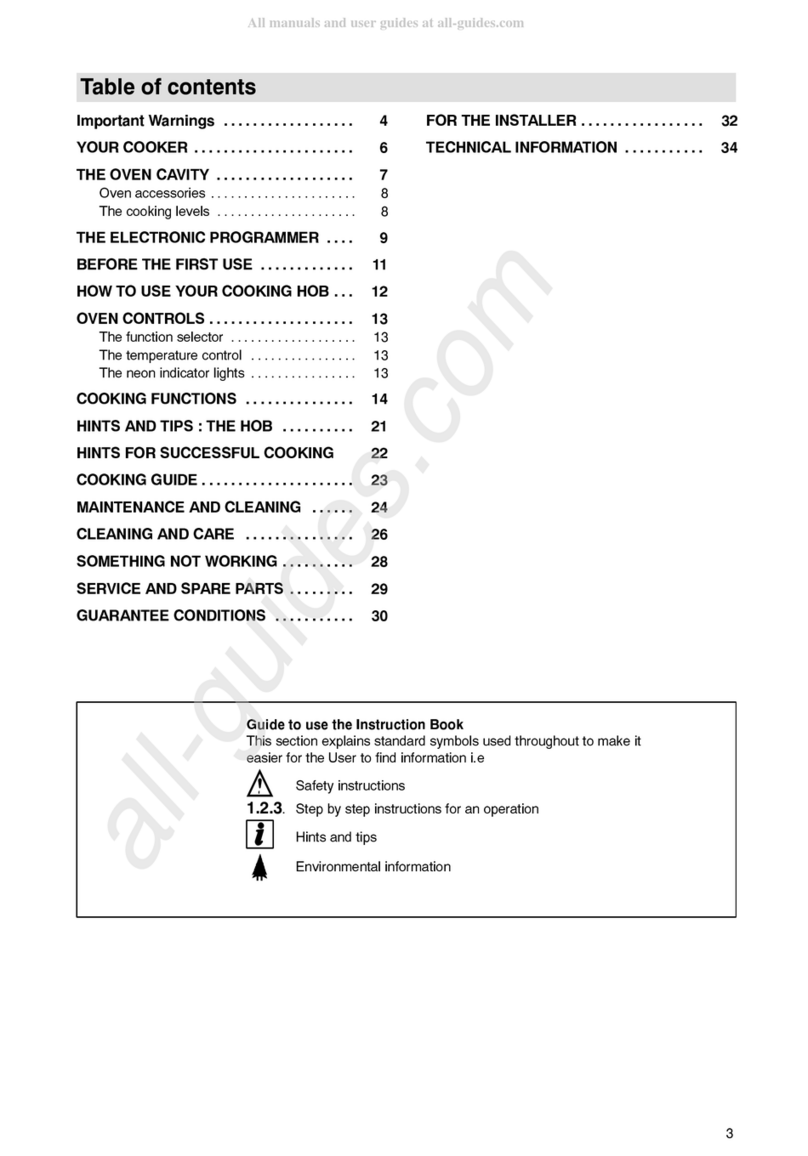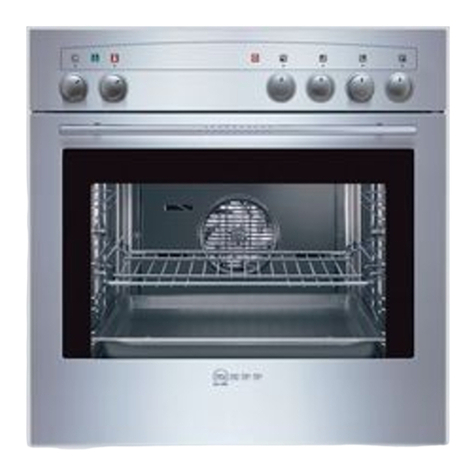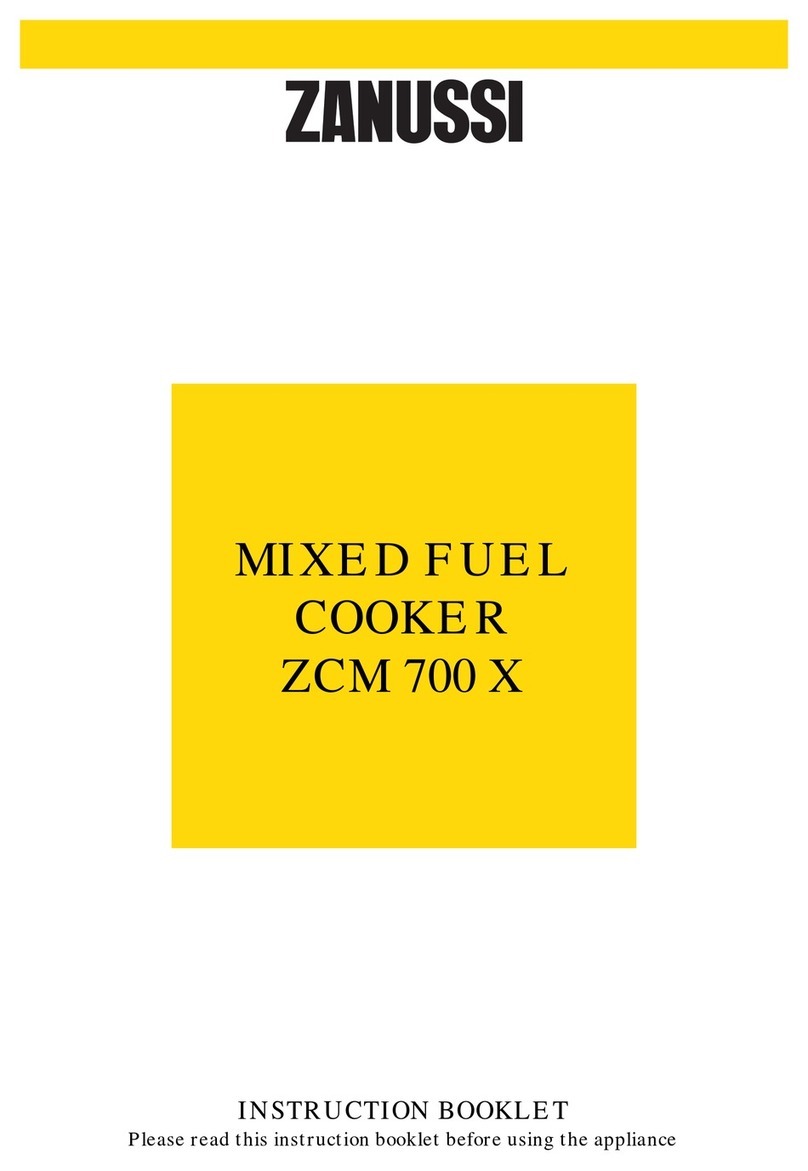
Instructions
95
• Use cables withstanding a
temperature of at least 90°C.
• The tightening torque of the
screws of the terminal supply wires
must be 1.5 - 2 Nm.
For this appliance
• After use, switch off the plates.
Never rely solely on the
cookware detector.
• Supervise children carefully as
they cannot readily see the
residual heat indication. After use
the cooking zones remain hot for
a certain period of time even if
they have been turned off. Keep
children away from the cooking
zones.
• The glass ceramic surface is highly
resistant to impact. However,
prevent hard, solid objects from
falling on the cooking surface as
they may cause it to break if they
are sharp.
• Do not use the glass ceramic
cooking surface as a support
surface.
• This appliance can be used up to
a maximum altitude of 4,000
metres above sea level.
• If cracks or fissures form, or if the
glass ceramic cooking surface
breaks, turn off the appliance
immediately. Disconnect the
power supply and call Technical
Support.
• Ensure that the appliance is
switched off before replacing the
bulb.
• Do not rest any weight or sit on the
open door of the appliance.
• Take care that no objects are
stuck in the doors.
• People who have pacemakers or
other similar devices fitted must
make sure that the operation of
these devices is not jeopardised
by the inductive field, whose
frequency range is between 20
and 50 kHz.
• In conformity with the provisions
regarding electromagnetic
compatibility, the electromagnetic
induction cooking hob comes
under group 2 and class B (EN
55011).


